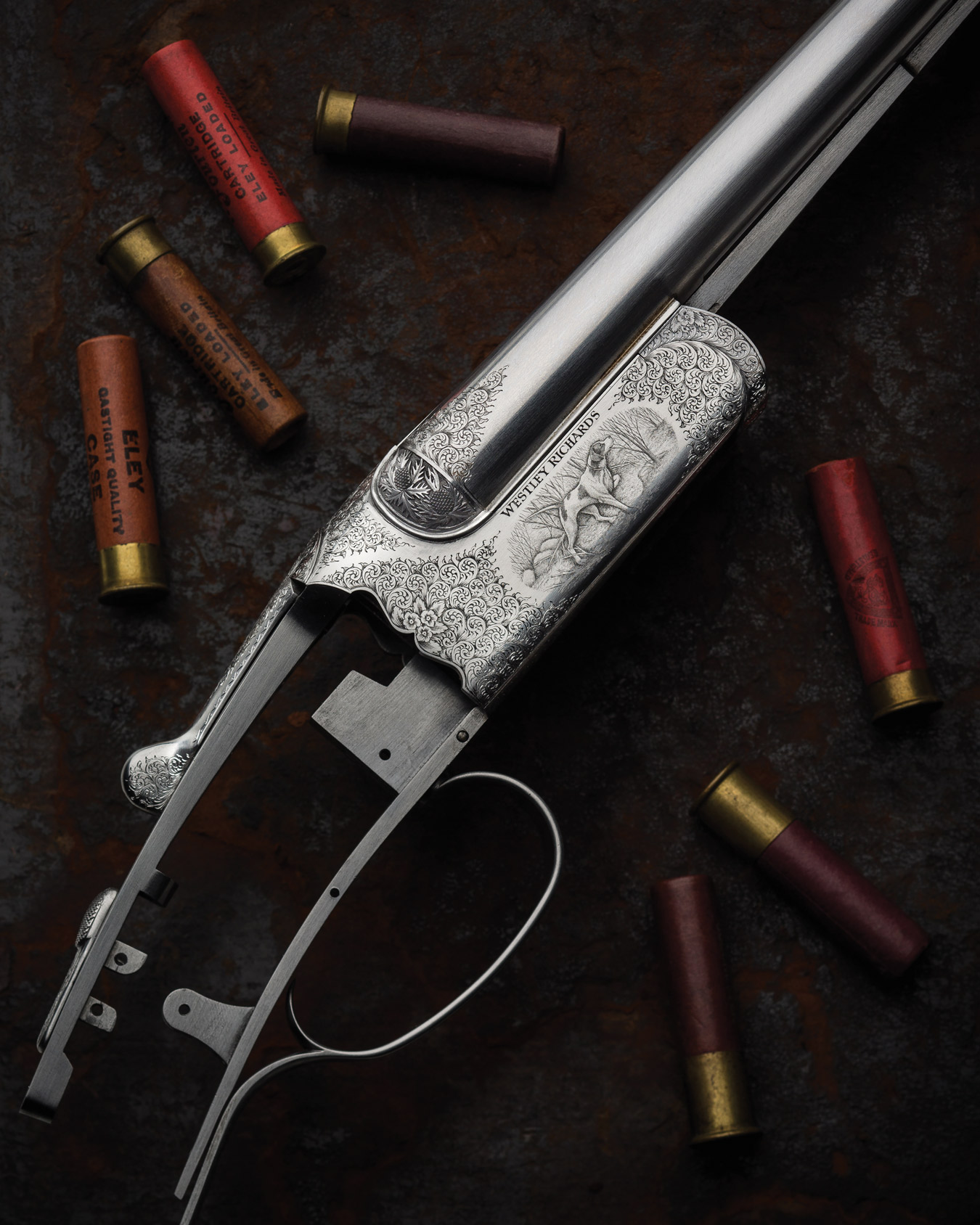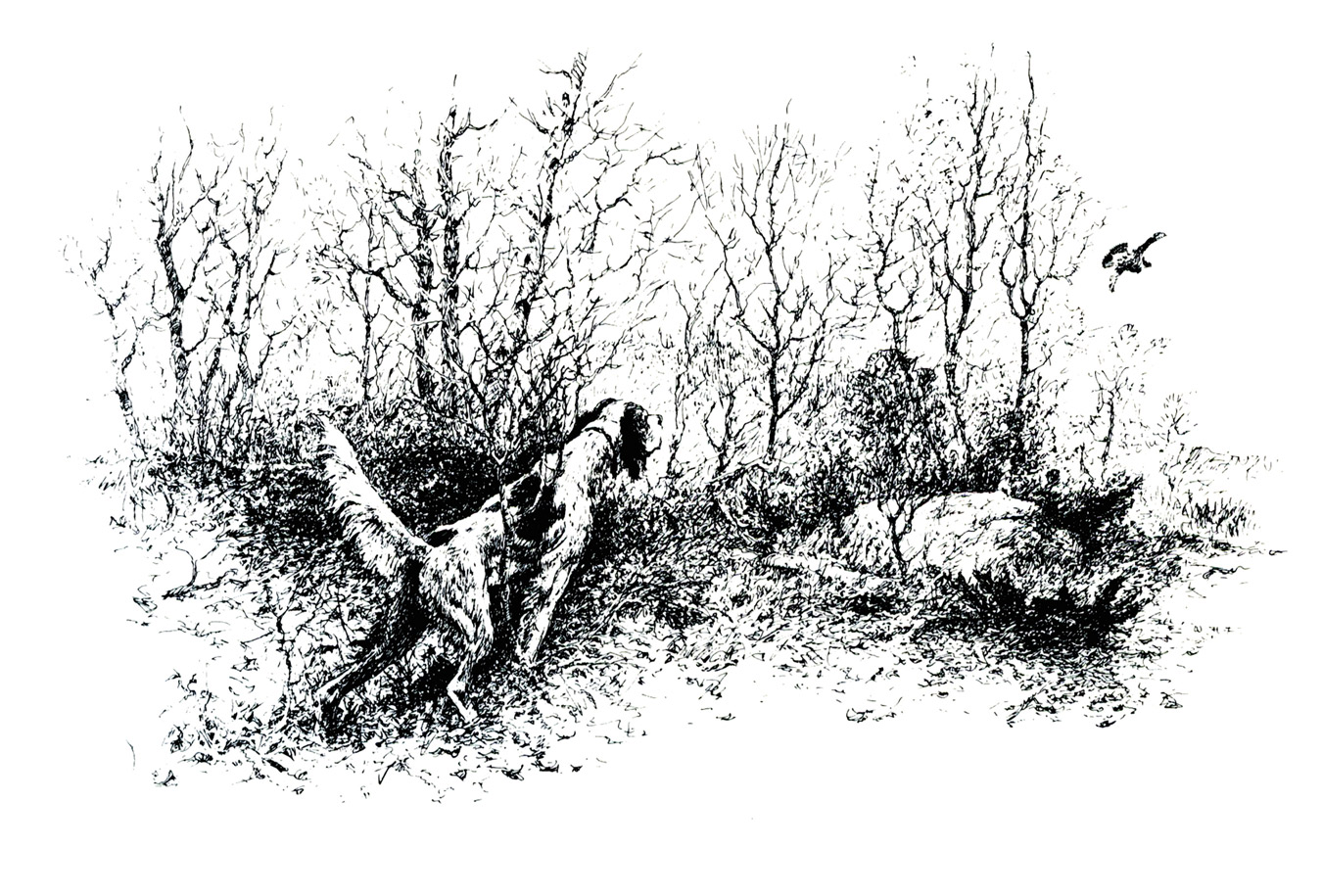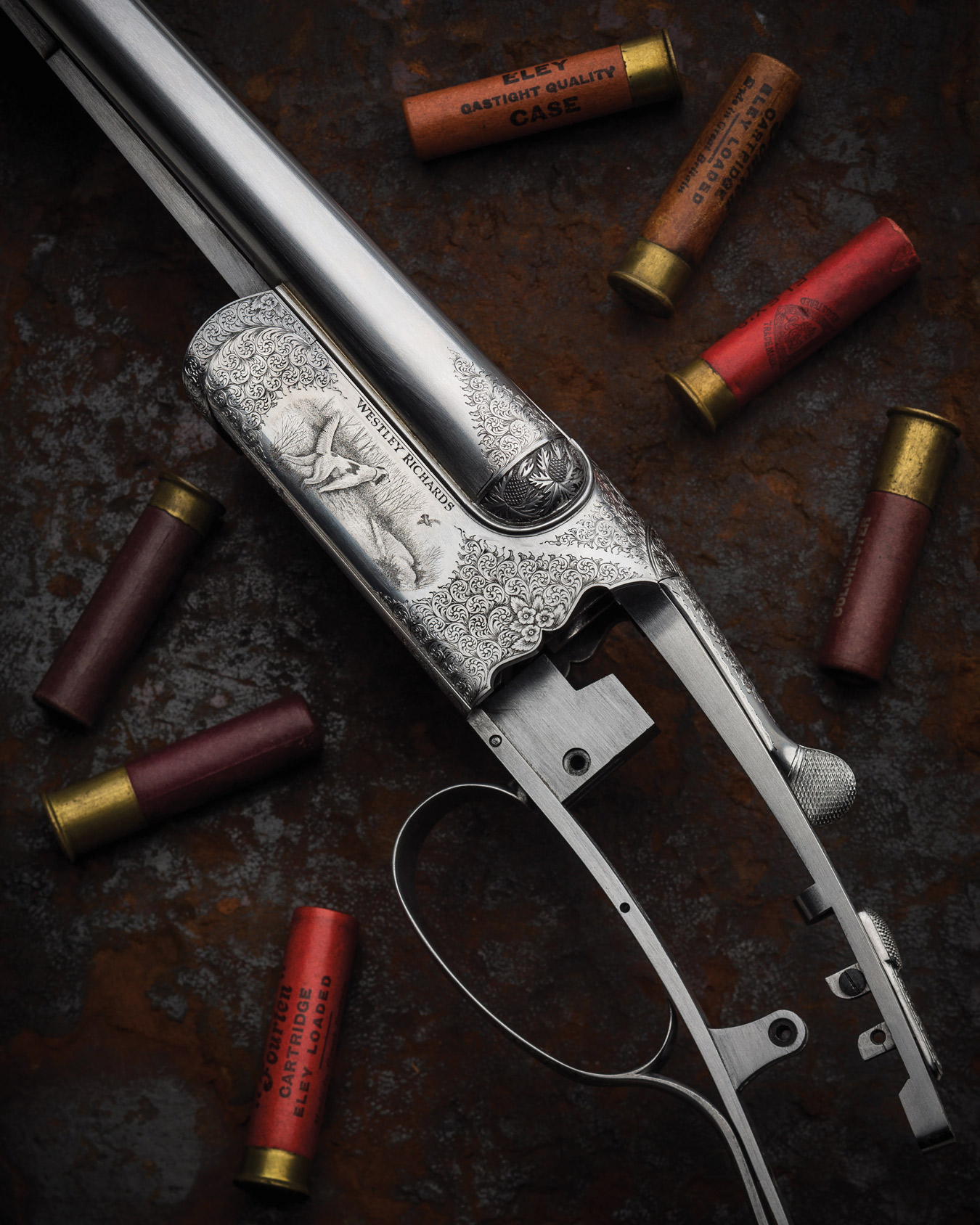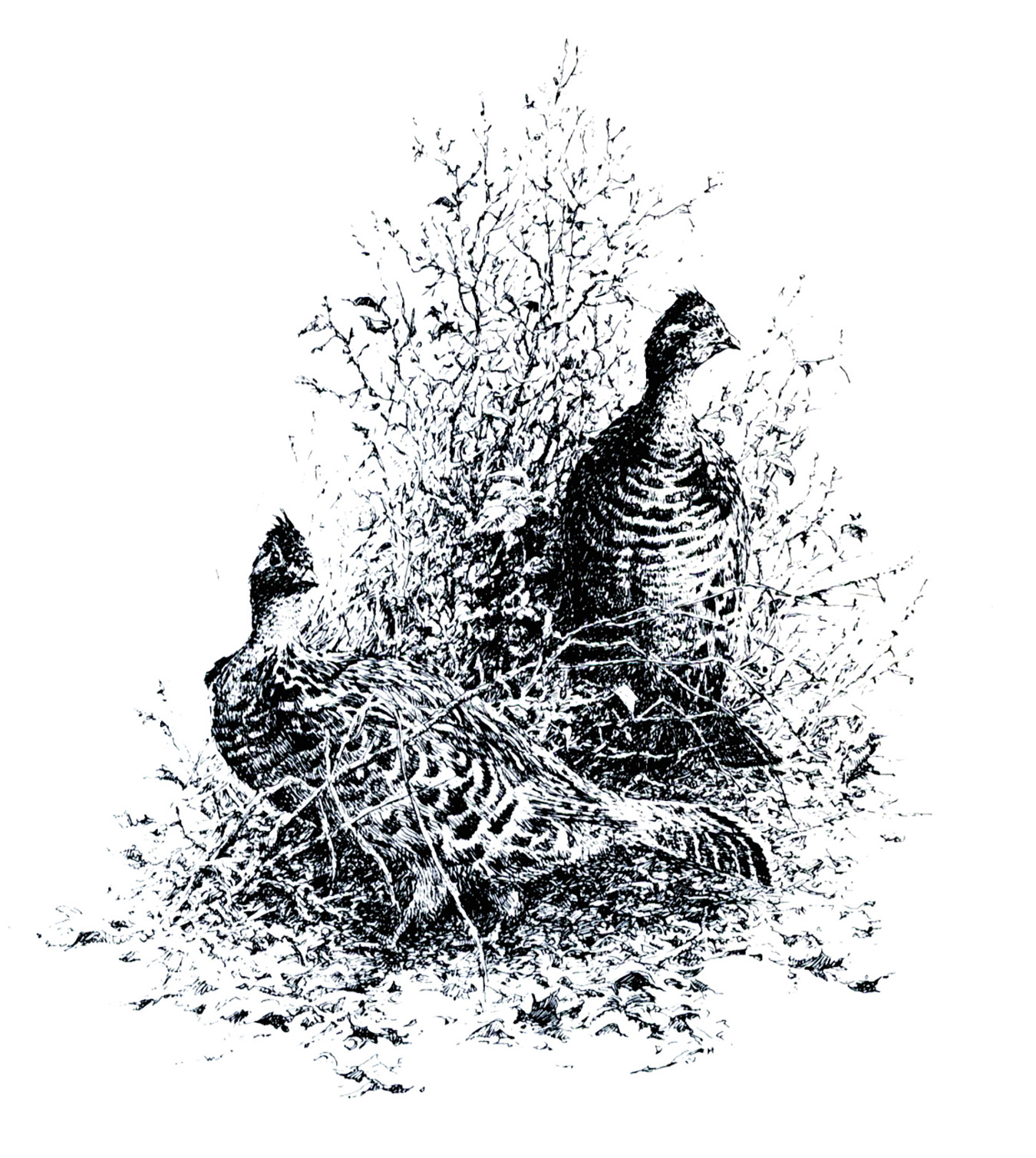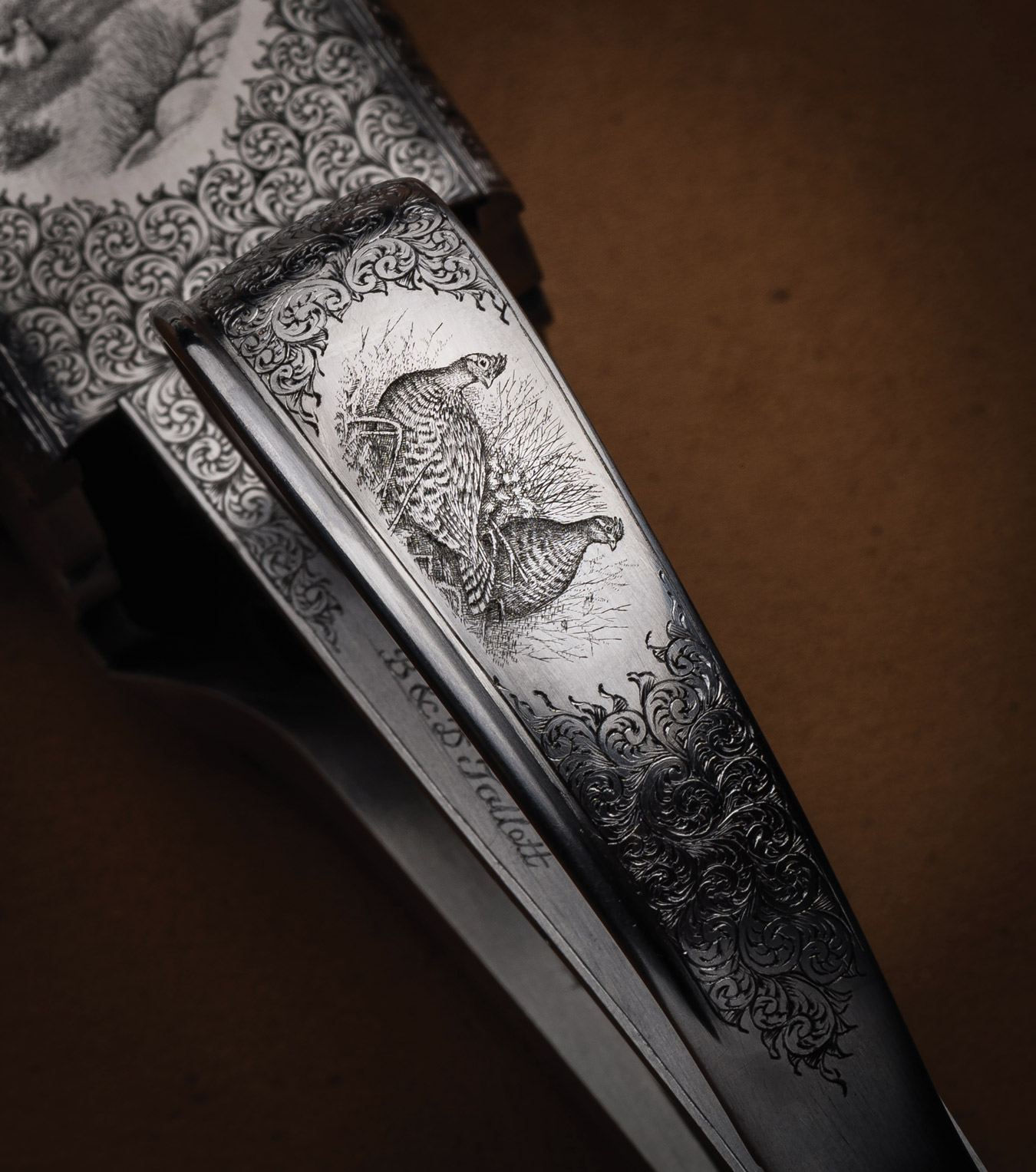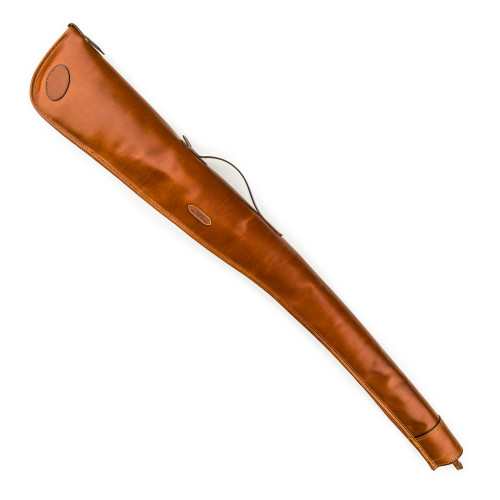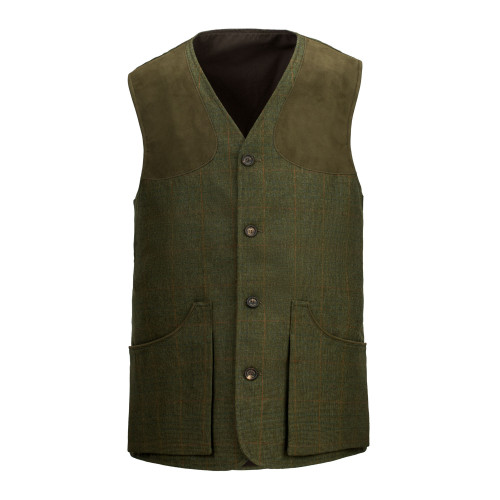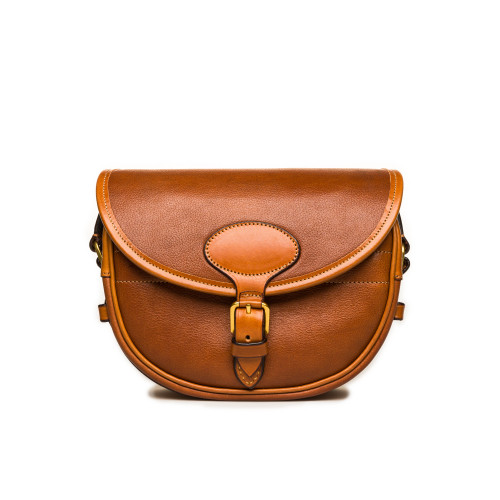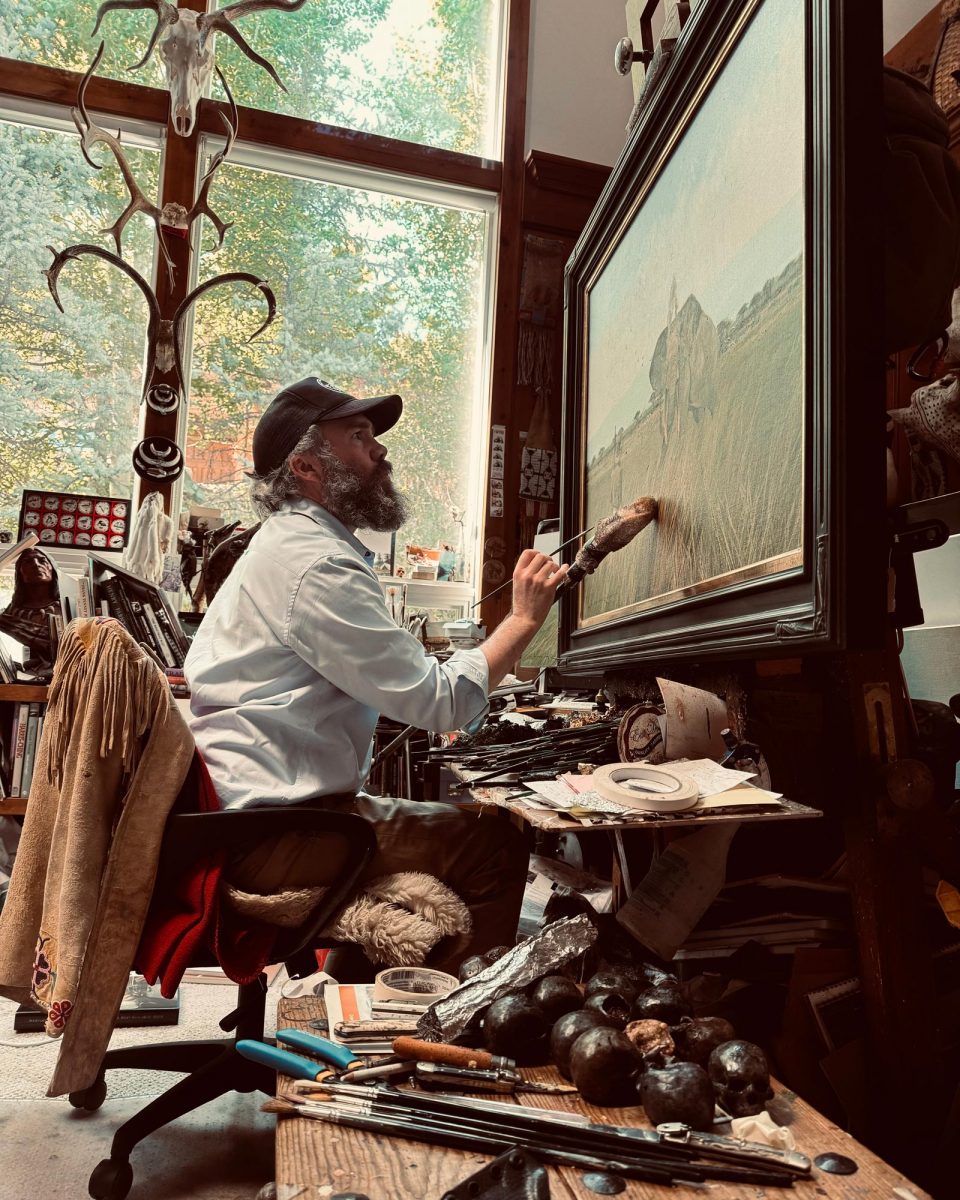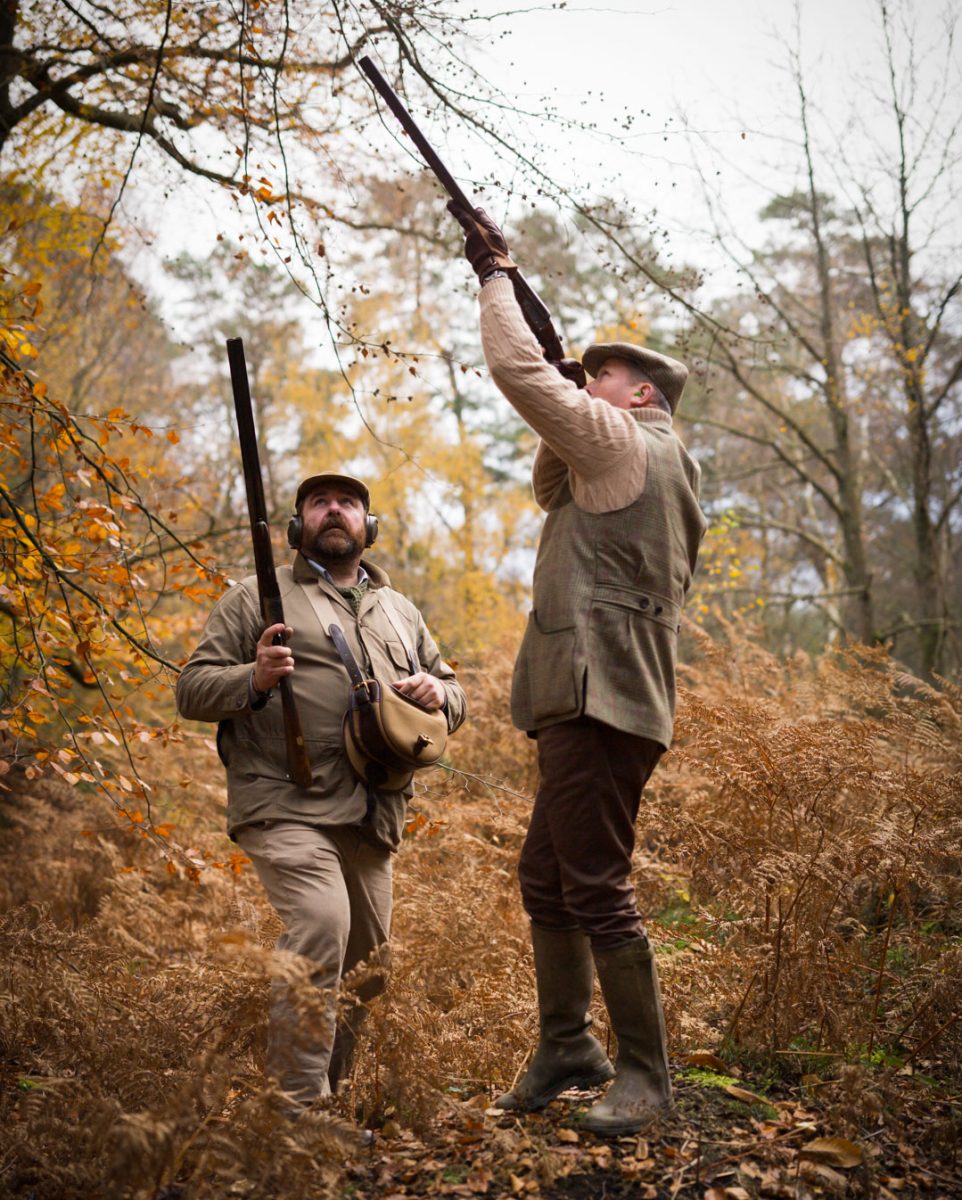If you don’t know of him, Chapman (long retired) made some of the best sidelocks in London during an era when quality at Britain’s famed houses wasn’t what it should have been.
When Brown wanted to order a best-quality .410 for himself several years ago, he visited the Westley Richards stand at the Dallas Safari Club and met Simon Clode, who, as Brown described in a short article on the online edition of The Explora, ‘put an absolutely beautiful detachable lock .410 in my hands and – as all good salesmen know how to do – simply waited’.
‘By this point in my life I’d seen a good many truly best guns and had some idea of what I was looking at’, Brown wrote. His first thoughts were: ‘Is this some sort of special project gun that was not likely to be repeated or was he actually producing guns of this quality today?’
‘After due diligence, I determined that Westley Richards really was producing guns like this and, more importantly, Simon was regarded by people in the know as absolutely honest and reliable in his dealings. Very shortly after the Dallas show I left a call for Simon and he called me back from Las Vegas. I placed a verbal order, the order forms were sent, and so it began’.
Brown’s knowledge and vast experience make his order an instructive case study for those considering a new best-quality British gun. I asked him what was most important for a first-time customer contemplating a commission.
‘First, learn as much about fine guns as you can’, said Brown. ‘Ask collectors, experts, and research and read – but take what you see in magazines with a grain of salt. Then decide what you really want, or really need’. In other words, discern what purpose your gun will serve.
PURPOSE
Historically, British sporting guns were built for a specific purpose – guns for driven game, for example, had very different configurations to those made for live-pigeon trap shooting or those for waterfowling. In 12-bore, for example, game guns were built around a 2½" cartridge; pigeon guns, 2¾"; and 3" or longer for waterfowling. Each was weighed, balanced and stocked appropriately for the task at hand.
This can still be said to be true today. Broadly speaking, purpose will influence your gun’s bore, overall weight, point of balance, barrel length, chamber length, chokes, rib shapes and stock dimensions and configurations.
The gun stock will be made to your measurements, and look to The fine art of the gun fit, page 166, for an excellent in-depth discussion. One point, I think, bears some elaboration, and again it centres on purpose.
Talented shots – natural shots – can wield almost any gun to good effect but correctly fitted most of us will shoot better and if you’ve been fitted with a purpose in mind you’ll certainly shoot best. For example, longish high-combed stocks are frequently prescribed in Britain for formal driven shooting where there are unobstucted fields of fire and time enough for elegant, practiced gun mounts. Measurements may be tuned to help deliver patterns slightly high, to build in extra lead for oncoming birds.
But for the gunner whose game is, say, ruffed grouse or woodcock in the thickets of North America – where you may have one leg over a log and are anyway off balance when a bird flushes from where you least expect it – a slightly shorter, easier-to-mount stock will probably serve you better. Explain to your fitter what you mostly intend to shoot, the conditions in which you pursue your quarry, and during the fitting process ask for targets that approximate your game.
WHO WILL MAKE YOUR GUN?
In olden times, when transportation was slow, a customer might have chosen a gunmaker because he was nearby. And a gentleman in the traditional English sense of the word (landed, probably titled) often inherited his gunmaker because it had been his father’s or grandfather’s. Pedigree was important, associations with the aristocracy too, and both were in some sense guarantors of quality.
Nowadays, said Brown, your first and foremost consideration should be the integrity of the gunmaker. A new commission, regardless of maker, will require a considerable outlay of capital and equal measures of patience and trust. ‘You should be very very careful about the company you choose’, Brown said. ‘Do your research, and ask around with people who’ve had guns made’.
That doesn’t mean pedigree is irrelevant, and if you select a long-established gunmaker, consider its historic strengths – the types of firearms it is renowned for. For example, today there are any number of companies that can build a fine double rifle but if you intend to take one afield for dangerous game, the stakes can’t be much higher, so choose a maker that has a reputation for making them.
Whether for the discerning collector or the avid sportsman, Westley Richards firearms represent the epitome of excellence in the world of bespoke gunmaking. Known for the droplock shotgun, over and under shotgun, double barrel rifle and bolt action rifle, the company has achieved an illustrious 200 year history of innovation, craftmanship and artistry. As part of our best gun build, clients can choose from three levels of gun engraving: the house scroll; signature game scenes; and exhibition grade masterpieces. All Westley Richards sporting arms are built at their factory in Birmingham, England. Discover more about the gunmaking journey at our custom rifles and bespoke guns pages.



 Enquire
Enquire







